Related Research Articles
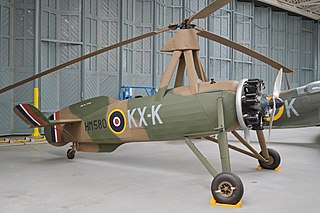
The Cierva C.30 is an autogyro designed by Juan de la Cierva and built under licence from the Cierva Autogiro Company by A V Roe & Co Ltd (Avro), Lioré-et-Olivier and Focke-Wulf.

The Darmstadt D-18 was a German light sports aircraft that was designed and built in the late-1920s by the Akaflieg Darmstadt of the Technische Universität Darmstadt.

The Westland Widgeon was a British light aircraft of the 1920s. A single-engined parasol monoplane, the Widgeon was built in small numbers before Westland abandoned production in 1929.

The Southern Martlet was a single-engined, single-seat biplane sports aircraft. Six were built, including the rather different and unsuccessful Metal Martlet.
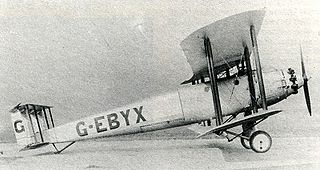
The Vickers Vellore was a large biplane designed as a freight and mail carrier, in single-engined and twin-engined versions, which saw limited use as freighters and long-range experimental aircraft. A final variant with a broader fuselage, the Vellox, was built as an airliner.
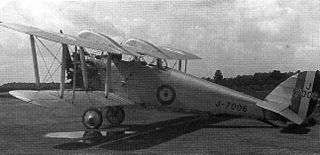
The de Havilland DH.42 Dormouse and its two variants the de Havilland DH.42A Dingo I and II were two-seat single-engined biplanes designed for fighter-reconnaissance and army cooperation roles. They did not achieve production.

The Fairey G.4/31 was a British single-engined, two-seat biplane contender for an Air Ministry specification for a multi-role or general purpose aircraft. Unsuccessful, only one was built.
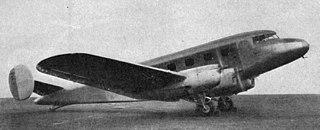
The Potez 661 was a four-engined metal low-wing monoplane airliner developed in France just before World War II. The single example flew with Air Afrique on French colonial routes.
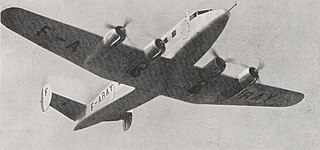
The Potez 662 was a higher powered and faster development of the Potez 661. Like its predecessor, it was a low wing, four engine monoplane carrying 12 passengers. Only one was built, serving with the French Air Ministry.

The Civilian Coupé is a British, single-engined two-seat private monoplane built starting in 1929. Only five were made and it was the Civilian Aircraft Company's only product, but one still flies in the UK.

The Robinson Redwing was a British two-seat single-engined biplane light aircraft built in the UK in 1930. Twelve were produced, selling mostly to Clubs; one aircraft survives.
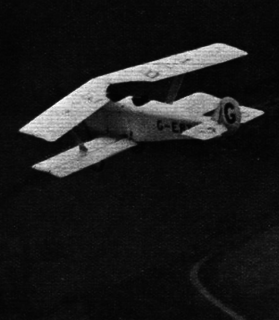
The Parnall Imp was an unusual single-engined, two-seat British biplane built in 1927. It had a straight cantilever lower wing which supported the markedly swept upper wing. Only one was built.

The Junkers T 19, originally known as the J 19, was a single-engined parasol winged all-metal 2/3-seat aircraft built in Germany in the early 1920s for training and touring. Its construction was too expensive for commercial success and only three were built, one later finding use as an engine test-bed.

The CANSA FC.20 was a twin engine reconnaissance bomber/ground attack monoplane designed and built in Italy in 1941. Several versions with different armament and engines were flown but only the FC.20bis ground attack variant reached squadron service, in very small numbers, before the 1943 armistice.
The Gribovsky G-21 was a single engine cabin monoplane designed and built in the USSR in the mid-1930s. Intended for touring and civil utility rôles, only one was completed.

The Nieuport-Delage NiD 590 was a three engine, high wing monoplane designed for policing and other roles in France's colonies, which did not go into production or enter service.
The Lambert Twin Monocoach was a light, twin-engined U.S. aircraft, designed to carry three or four passengers. Initially it was fitted with economical, low-powered engines but even given a large increase of power it failed to attract customers.

The Medwecki and Nowakowski M.N.5 was an economical Polish trainer aircraft initially aimed at the club market, though there was also some military interest. It performed well but lacked a constructor after Samolot became insolvent in 1930, so only one was completed.
The Ostrovia II or Moryson II was a 1930s Polish club trainer aircraft, a development of the Ostrovia I. Only one was built and was used by the Poznań flying club for five years.

The Couzinet 30 was a light transport aircraft / mailplane designed and built in France in 1930 at Société des Avions René Couzinet.
References
- 1 2 3 4 5 6 "le bimoteur léger "S.E.A.-1"". Les Ailes (794): 3. 3 September 1936.
- 1 2 "Golden Years of Aviation" . Retrieved 16 April 2016.
- 1 2 Grey, C.G. (1972). Jane's All the World's Aircraft 1938. London: David & Charles. p. 9c. ISBN 0715 35734 4.